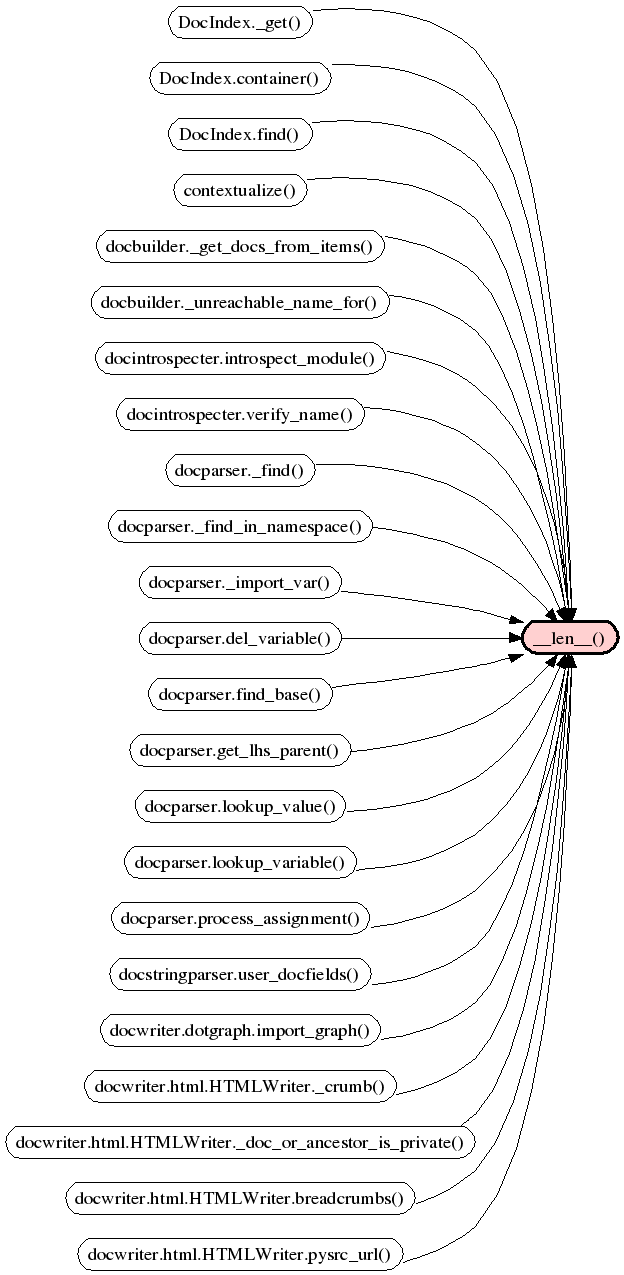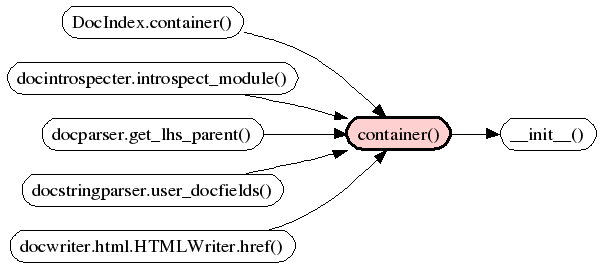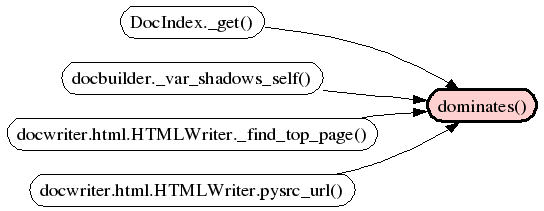| Instance Methods |
| __init__(self,
*pieces) Construct a new dotted name from the given sequence of pieces, each of which can be either a string or a
DottedName. |
source code
call graph |
| __repr__(self) |
source code
call graph |
| __str__(self) Return the dotted name as a string formed by joining its identifiers with periods: |
source code
call graph |
| __add__(self,
other) Return a new DottedName whose identifier sequence is
formed by adding other's identifier sequence to
self's. |
source code
call graph |
| __radd__(self,
other) Return a new DottedName whose identifier sequence is
formed by adding self's identifier sequence to
other's. |
source code
call graph |
| __getitem__(self,
i) Return the ith identifier in this
DottedName. |
source code
call graph |
| __hash__(self) |
source code
call graph |
| __cmp__(self,
other) Compare this dotted name to other. |
source code
call graph |
| __len__(self) Return the number of identifiers in this dotted name. |
source code
call graph |
| container(self) Return the DottedName formed by removing the last identifier from this dotted name's identifier sequence. |
source code
call graph |
| dominates(self,
name,
strict=True) Return true if this dotted name is equal to a prefix of name. |
source code
call graph |
| contextualize(self,
context) If self and context share a common
ancestor, then return a name for self, relative to that
ancestor. |
source code
call graph |











